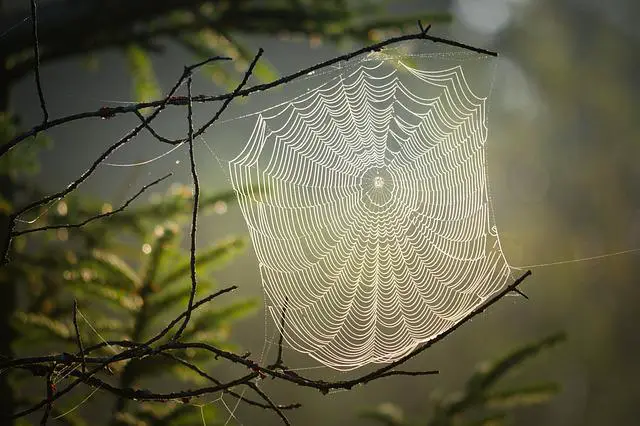Do you ever wonder how spiders communicate with each other? How do they share information and organize their hunts? In this blog post, we will explore the different methods of spider communication. We will discuss how they use vibrations, chemicals, and sounds to communicate with one another. Stay tuned to learn more about these fascinating creatures.
Introduction How do spiders communicate with each other?
Spiders are fascinating creatures, and their methods of communication are no exception. While most spiders communicate using visual cues, some also use sound or touch to communicate with each other. Here are a few of the most common ways that spiders communicate:
1. Visual Cues: One of the most common ways spiders communicate is through visual cues. This can include changes in body posture, leg movements, and the arrangement of their web. By communicating visually, spiders can convey a wide range of messages to each other, from simple warnings to complex mating rituals.
2. Sound: Some spider species also communicate using sound. While most spiders produce vibrations through their webs, some species also have sounds by scraping their legs together or clicking their mandibles. Spiders can use these sounds to communicate various messages, from alarm signals to invitations to mates.
3. Touch: In addition to visual and acoustic signals, some spider species communicate through touch. This can include contact via the web or direct physical contact between two spiders. They can use such contact to convey information about danger, courtship, or territoriality.
Though they may seem strange, these communication methods are essential for wild spiders. By understanding how they communicate, we can better appreciate these fantastic creatures.
How do spiders communicate with each other?
Although most people think of spiders as loners, many species are pretty social. Sometimes, spiders live in large colonies with hundreds or thousands of members.
Under these conditions, spiders need to be able to communicate with each other to avoid conflict and coordinate their activities.
Spiders use various communication methods, including sight, sound, and touch. The most well-known way is the production of silk.
By manipulating the silk thread, spiders can send signals that other spiders can detect.
For example, a spider may wrap its prey in silk to indicate that it is off-limits to others. In some cases, spiders also use pheromones to send messages.
These chemical signals can convey information about an individual’s identity, reproductive status, and more.
Spiders can live together in surprisingly close quarters using these various communication methods.
How do spiders attract mates for breeding?
Spiders use a variety of methods to attract mates for breeding. For example, some spiders produce sound vibrations to attract mates, while others release particular pheromones.
Some species of spiders even build web decorations to attract the attention of potential mates. In addition, the male spider will often perform a mating dance to impress the female.
Once the female is attracted, she usually allows the male to mate with her. If the female is not interested, she may attack or even eat the male.
As a result, spiders have evolved various methods to increase their chances of successfully finding a mate.
Do all spiders use the same methods of communication?
The short answer is no – not all spiders use the same methods of communication.
Some species communicate primarily through visual cues, while others use a combination of visible and vocal signals.
Still, others communicate exclusively through vibration, which burrowing spiders often use.
Each species has evolved to use the methods of communication that are most effective in its particular environment.
For example, ground-dwelling spiders need to be able to communicate over long distances, so they have developed well-developed vibration-based signals.
In contrast, web-based spiders often rely heavily on visual cues since they are typically within close range of one another.
Ultimately, the methods of communication used by any spider species are dictated by its needs and environment.
How do scientists study spider communication?
Spider communication is an intriguing area of study for scientists. While some spiders communicate using visual cues, such as changes in body coloration, others rely on more subtle methods, such as vibrations on the web.
To study spider communication, scientists use various methods, including laboratory experiments and field observations. In laboratory experiments, scientists can carefully control the variables and observe the spiders’ responses under multiple conditions.
Field observations provide a more naturalistic setting but can be less controlled. In both studies, scientists often use special equipment, such as microphones and infrared cameras, to record and analyze the spiders’ communications.
By studying spider communication, scientists hope to gain insights into the evolutionary history of these fantastic creatures.
What implications does our understanding of spider communication have for humans and other animals?
Although spiders are often considered solitary creatures, many species are pretty social and use various methods to communicate with one another.
For example, some spiders produce special silk that can be used to send vibrations through the air or ground, allowing them to communicate over long distances.
Other spiders use their web to send visual signals, such as when a spider wraps an insect in its web. This behavior is known as web decoration and is thought to send messages to other spiders.
While the details of spider communication are still being studied, there is evidence that these methods of communication are similar to those used by other animals, including humans.
For example, like spiders, humans use vibration to communicate through the air (e.g., speaking) or ground (e.g., drumming).
We also use visual signals to communicate, such as body language, facial expressions, and hand gestures. These similarities suggest that our understanding of spider communication can affect other animals, including humans.
For example, studying spider communication could help us to develop new methods of communication that are more effective and efficient.
Understanding how spiders communicate could also help us understand other animals’ communication systems.




